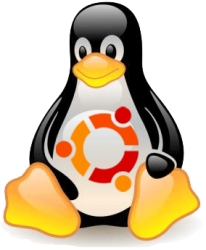When I was an undergrad at Georgia Tech, I worked on a research project for a year. I worked part of the time while still in school and continued after I graduated. I didn’t really have a senior design project and most undergrads didn’t do actual “research”. So, I felt pretty lucky to be involved in a real research project, especially given the level of my involvement. I worked with Dr. Harvey Lipkin and his grad student Russell Marzette Jr. Russell and Dr. Lipkin had developed a new way to actuate (bend and position) really large telescope mirrors and it was my job to develop software to model and test this technique. I wrote some MATLAB and ANSYS code to automate all of my tests. What was really cool (and unknown to me prior) was that I could use ANSYS from the command line and write scripts which match a normal GUI work flow in the 3D environment. I could create structures, apply loads, mesh structures, and run simulations all from scripts. This allowed me to create a MATLAB GUI to set parameters (or sets of parameters), create and execute custom ANSYS scripts, and format ANSYS-generated image and text results. I could set a span of parameters and run an entire batch of ANSYS simulations back-to-back. Continue reading “Past Work: Large-Scale Mirror Actuation”
Tag: linux
Tethering: Ubuntu 12.04, Android 4.0.4, Nexus S 4g, Sprint: FML
A quick post to document my failures and final success. Back story: I’ve been using PDANet on my Windows 7 machine to USB-tether my Nexus S 4g (on Sprint) running Android 2 (then 4) for a year now and its been great. I was 100% pleased with the setup. Unfortunately I just got sick of Windows 7 and decided to switch to Ubuntu 12.04. I’d heard good things and was back on the linux bandwagon. Continue reading “Tethering: Ubuntu 12.04, Android 4.0.4, Nexus S 4g, Sprint: FML”
LiNuXT: Linux + NXT
Since transitioning to Ubuntu Linux, I’ve continued working on my Lego NXT projects. I spent several hours figuring out how to configure my machine to write, debug, and upload code to the NXT brick. I found several sites and message board posts, each detailing a specific step in the process. I thought it would be a good idea to bring all of this information together and hopefully make it easy for anyone else who wishes to follow in my footsteps.
The entire process consists of setting up a Windows emulator (WINE), installing an IDE (BricxCC), and installing and running a communications tool between linux and the brick (Talk2NXT).
Lego NXT Ubuntu Linux from Jason Atwood on Vimeo.
Getting Started in Linux

To start off, I have installed Ubuntu 8.10 on both of my home machines. Each new Ubuntu release is given a name and 8.10 is called Intrepid Ibex. I preformed both installs from a Live CD which allows me to run the OS from the CD-ROM without installing anything. I knew that I would enjoy it immediately so I chose to simply reformat both computers. Continue reading “Getting Started in Linux”